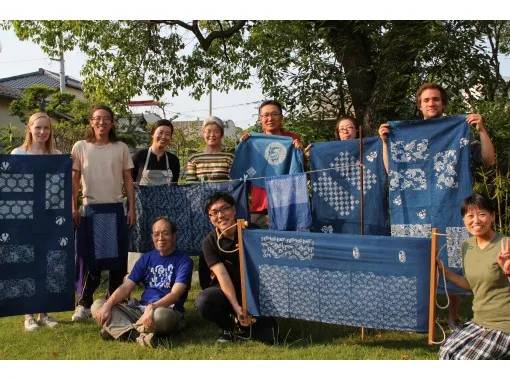Modern Dyeing Techniques
Modern dyeing techniques are a diverse set of methods that use advanced technology and chemistry to achieve a wide range of colors, patterns, and effects on fabrics. Some of the most common modern dyeing techniques include:
Reactive dyeing: This technique involves a chemical reaction
between the dye and the fabric fibers, resulting in a permanent bond. Reactive
dyeing is widely used for cotton and other cellulosic fibers, and it offers a
wide range of colors and excellent colorfastness.
Disperse dyeing: This technique is primarily used for
synthetic fibers like polyester, acetate, and acrylic. Disperse dyes are
dispersed in a hot water bath, and the fabric is then immersed to achieve
vibrant and long-lasting colors.
Digital printing: This modern approach utilizes digital
technology to directly print dyes onto fabric, allowing for intricate designs,
gradients, and photographic prints. Digital printing is becoming increasingly
popular for both the fashion and home décor industries.
Ultrasonic dyeing: This technique uses ultrasonic waves to
accelerate the dyeing process and improve the penetration of the dye into the
fabric. Ultrasonic dyeing is particularly useful for dyeing complex patterns
and designs.
Plasma dyeing: This technique uses plasma technology to create
a highly reactive surface on the fabric, which allows the dye to adhere more
strongly. Plasma dyeing is often used to dye synthetic fabrics that are
difficult to dye using traditional methods.
In addition to these specific techniques, there are a number
of other modern dyeing innovations that are being developed and implemented by
the textile industry. For example, researchers are working on developing new
types of dyes that are more environmentally friendly and less water-intensive.
They are also developing new dyeing processes that can be used to dye cloths at
lower temperatures, which can help to reduce energy consumption.
Modern dyeing techniques have revolutionized the way that
fabrics are colored. They have made it possible to achieve a wider range of
colors and patterns than ever before, and they have also made the dyeing
process more efficient and sustainable.
Here are some examples of how modern dyeing techniques
are being used to create innovative and beautiful fabrics:
Digital printing: Digital printing is being used to create
fabrics with intricate designs, gradients, and photographic prints. This
technology is particularly well-suited for creating custom fabrics for fashion
and home décor.
Ultrasonic dyeing: Ultrasonic dyeing is being used to create
fabrics with complex patterns and designs that would be difficult or unbearable
to achieve using traditional methods. For example, ultrasonic dyeing is used to
create fabrics with ombre effects and geometric patterns.
Plasma dyeing: Plasma dyeing is being used to create fabrics with enhanced colorfastness and durability. This technology is particularly
well-suited for dyeing fabrics that are used in harsh environments, such as
outdoor furniture and automotive interiors.
Modern dyeing techniques are also being used to create
fabrics that are more sustainable and environmentally friendly. For example,
some companies are developing new types of dyes that are made from natural
materials, such as plant extracts and food scraps. Other companies are developing
new dyeing processes that use less water and energy.
Modern dyeing techniques are constantly evolving, and new
innovations are emerging all the time. These techniques are enabling the
textile industry to create fabrics that are more beautiful, functional, and
sustainable than ever before.
What are the three 3 stages of dyeing?
The three stages of dyeing are:
Preparation: This stage involves cleaning and preparing the
fabric for dyeing. This may include steps such as desizing, bleaching, and
scouring.
Dyeing: This stage involves immersing the fabric in a dye
solution and applying heat and pressure to encourage the dye to adhere to the
fibers.
Finishing: This stage involves washing the fabric to remove
any excess dye and applying any necessary finishing treatments, such as
softening or wrinkle-proofing.
The specific steps involved in each stage will vary contingent
on the type of fabric being dyed, the type of dye being used, and the desired
results. However, the three basic stages of preparation, dyeing, and finishing
are common to all dyeing processes.
Here is a more detailed description of each stage:
Preparation
The preparation stage is essential to ensuring that the
fabric will dye evenly and achieve the desired color intensity. The first step
is to remove any sizing or final agents that have been applied to the fabric.
This can be done by desizing, which involves washing the fabric in a hot,
alkaline solution.
Once the sizing has been removed, the fabric may be bleached
to remove any natural color pigments. Bleaching is especially important for
dyeing white or light-colored fabrics.
Finally, the fabric is scoured to remove any dirt, grease,
or other impurities. Scouring is typically done by washing the fabric in a hot,
soapy solution.
Dyeing
The dyeing stage involves immersing the fabric in a dye
solution and applying heat and pressure to encourage the dye to adhere to the
fibers. The type of dye solution used and the dyeing conditions will vary
depending on the type of fabric being dyed and the desired color results.
For example, natural fabrics such as cotton and wool are
typically dyed using water-soluble dyes. Synthetic cloths, such as polyester
and nylon, are typically dyed using disperse dyes.




Comments
Post a Comment